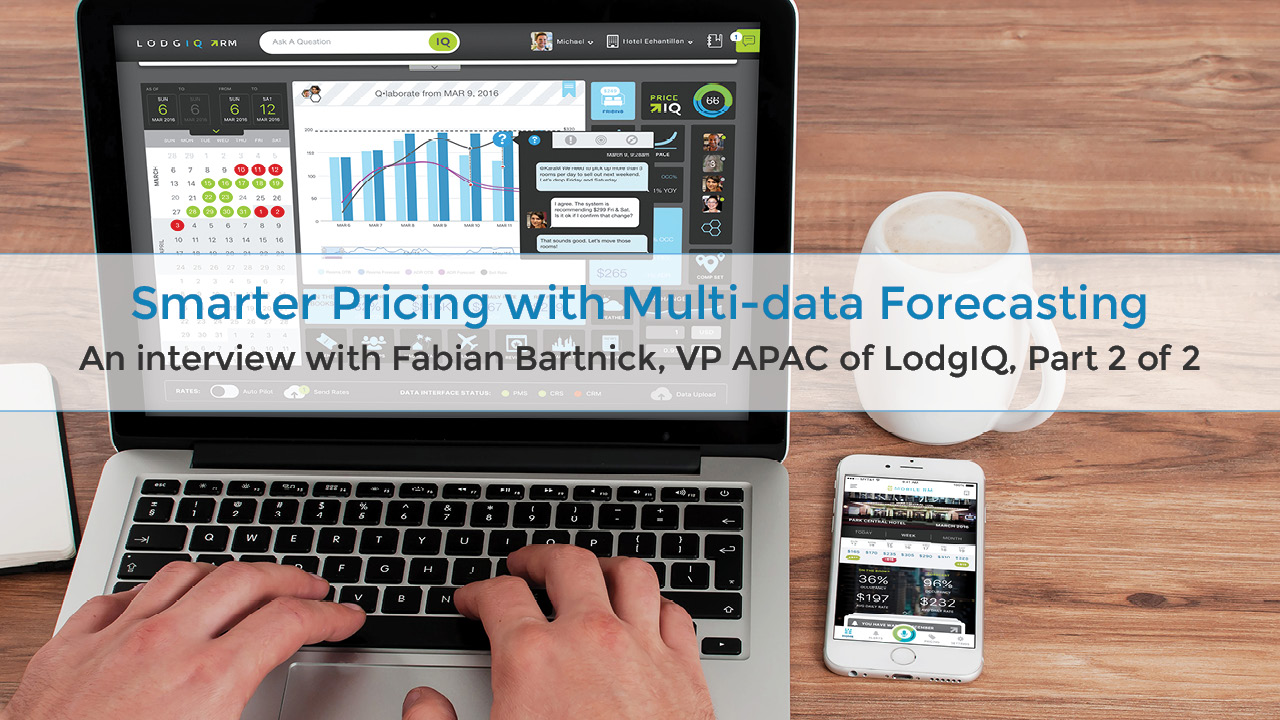This is part 2 of our smart hotel pricing series where we interview Fabian Bartnick, vice president of Asia-Pacific for LodgIQ. In this podcast Fabian discusses the effectiveness of older pricing strategies in modern revenue management. We also learn an interesting fact about ADR and sentiment pricing.
Prefer your news all at once? Sign up to receive revenue-related news right to your inbox.
Here is a summary of the podcast:
Pricing and the distribution landscape
Let’s look at a particular pricing structure at a hotel. The BAR rate is not enough anymore. You’re dynamically setting BAR rate and applying business rules to build out the remaining rates. So say your hotel’s BAR rate is $100, breakfast rate is $110, promotional rate at $90, advanced purchase at $95. From there, if you change BAR you’ve effectively changed all your rates, over 1,500 rates over a year, without consideration of evolving marketplace factors. These rates are then distributed over all the channels. Hotels now have the tools to easily maximize their profits through smart, dynamic pricing.
Considerations in RMS technology
In revenue management we talk a lot about segmentation. To a certain extent channels have become equally as important as segmentation because of the reliance on the distribution landscape and channel strategies. A multitude of pricing factors to be considered and revenue management systems need to account for that, for all hotel types. Perhaps you’re an independent hotel with only two or three room types. You don’t need the complexity, the ability to drill down to a granular level. This is our key reasoning behind the development of ONE.
Psychology in pricing
Pricing is largely influenced by psychological factors. Let’s explore a few. Take decoy pricing, for example. With decoy pricing you use a less-attractive price or offering to drive the buyer to choose the “better deal”, coincidentally the most profitable option for your business. By contrast, pricing in isolation, i.e. offering up a singular price, eliminates the opportunity for the buyer to come to a decision by comparing multiple offerings. Sentiment pricing, the evaluation of guests’ positive and negative views towards you and your competitors is another interesting factor to consider. For example, TripAdvisor saw an 11{97f5de9008dbce478b9914384118bb17bc275beb18053f10d4c63e347dc71139} lift in ADR for hotels reviewed positively on the site. Another example is Closed User Groups (CUGs). CUGs are groups of people who have opted in to an exclusive group, be it through a hotel loyalty program or within an OTA. These groups are offered discounted rates that are not offered to the general public.





